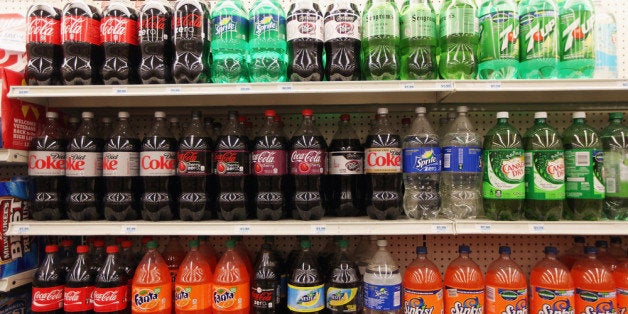
This week, New York City and the beverage industry squared off in the state's highest court over the proposed portion cap on soda and other sugary beverages. I wholeheartedly support this proposal, as health commissioner, as a physician, as a mother and as a New Yorker who has seen more and more neighbors fall victim to obesity and the deadly illnesses it causes.
The link between sugary drink consumption and obesity is irrefutable, as is the link between obesity and three major causes of death in New York: cancer, heart disease and diabetes. More than half of all adult New Yorkers and almost 40 percent of public school students are considered overweight or obese. Experts warn that unless we reverse obesity trends, today's youth may have a shorter life expectancy than their parents.
Sugary drinks like sodas, sweet teas and so-called sports drinks, guzzled from enormous containers, deserve the lion's share of the blame for obesity, and even the most vocal opponents of the portion cap proposal seem to agree that we're drinking too much of the wrong stuff. Resetting the default size on these drinks to more reasonable portions is one way to stem the tide of obesity.
But reversing the trend isn't as easy as it seems, especially when unhealthy food and beverages are so aggressively marketed. The industry spends roughly $2 billion each year promoting food and beverages to kids. Most of these products are unhealthy, and much of the marketing is directed toward lower-income communities of color, whose residents are disproportionally trapped in the grip of our city's obesity epidemic.
In one area of the Bronx, sugary drink advertising accounted for 85 percent of all advertisements, and only 8 percent of ads for food and non-alcoholic drinks were for healthy products. Our research shows that sugary drink ads are more prevalent in Central Harlem than its neighbor to the south, the Upper West Side. Tour our city's poorer communities, and it's easy to see the hand of big soda at work: Struggling bodega owners, prompted by distributor incentives, plaster their windows, doors and awnings with sugary drink ads. Consumers are forced to wade through this sea of junk, while healthy options are practically invisible.
Nationally, black children and teens reported seeing almost twice as many ads for sugary drinks, thanks to clever advertising and promotion. These tactics, the marketing industry's version of racial profiling, unfortunately are working. Health Department data show that New Yorkers who are poorer, black or Hispanic drink more sugary beverages than whites. And they pay for it with their bodies: Our black and Hispanic neighbors are nearly twice as likely to be obese and more than twice as likely to have diabetes as whites. Blacks disproportionally suffer the long-term effects of obesity, which is partly why they have a life expectancy at birth that is four years shorter than that of whites. National data paint a grim picture for our littlest New Yorkers: A Hispanic baby girl born today has more than a 50 percent chance of developing Type 2 diabetes in her lifetime. If she lives in a community targeted by big soda, she'll have no trouble finding unhealthy beverages to consume to help make that prediction a reality.
No one's health should be determined by their zip code, yet this is what is happening in our city. Without government action, big soda (both the portion size and the industry) will continue to harm our most vulnerable communities for generations to come.
Those who argue that the Board of Health overstepped its authority by proposing the portion cap are conveniently ignoring the fact that today's epidemic is obesity, and the Board is acting within its right to use every weapon at its disposal to save lives and reduce suffering.
The portion cap rule is not perfect, nor will it serve as the magic bullet to solve our obesity crisis. The Health Department and its community-based partners need to continue to educate the public through media campaigns and other vehicles, encourage store owners to stock more healthy foods and drinks, and to make healthy choices easier to buy. But in order to win the fight against the obesity epidemic, limiting portions is an important and necessary first step toward improving the health of all residents, regardless of where they live. Putting the brakes on big soda also will send a powerful message to the industry: Don't mess with New York. We all deserve better.